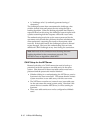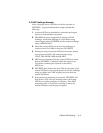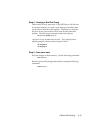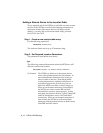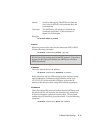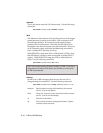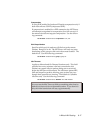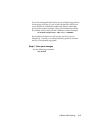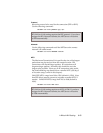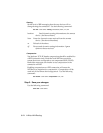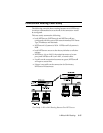6-18 LAN-to-LAN Routing
Step 3 - Multiple lines for a single connection
When talking to other NETServers, the NETServer can spread a
single TCP/IP connection over multiple lines (increasing
throughput). Individual IPX clients/socket connections will
show little (if any) benefit from this technique. However,
because load balancing is employed, this technique may allow
you to pipe more IPX clients/socket connections through the
same bandwidth. There are two parameters used to set this up:
High Water Mark and Maximum Ports. Furthermore, there is
some additional setup needed to allow the dialing NETServer to
dial multiple numbers from a single location table entry.
High Water Mark
Determines when the NETServer should open an additional
connection to a remote NETServer. The NETServer will open
another port if all of the following are true:
• The number of bytes queued for the remote location exceeds
the High Water Mark
• There is an available port in the location’s dial group
• The number of ports currently being used for the connection
is less than the Max Ports setting.
Default is 0 (immediately open Max Ports lines every time).
If you configure a small high water mark, the NETServer will
use an additional line whenever one is available. A larger high
water mark will cause the NETServer to use additional lines
only when they are really needed, leaving them free for other
uses. Keep in mind the kind of traffic you expect across the link.
Light traffic, such as a user Telnet session, will usually only
queue a few hundred bytes. File transfers, on the other hand,
can easily queue several thousand. Use the following command:
set location <location> high_water <bytes>



